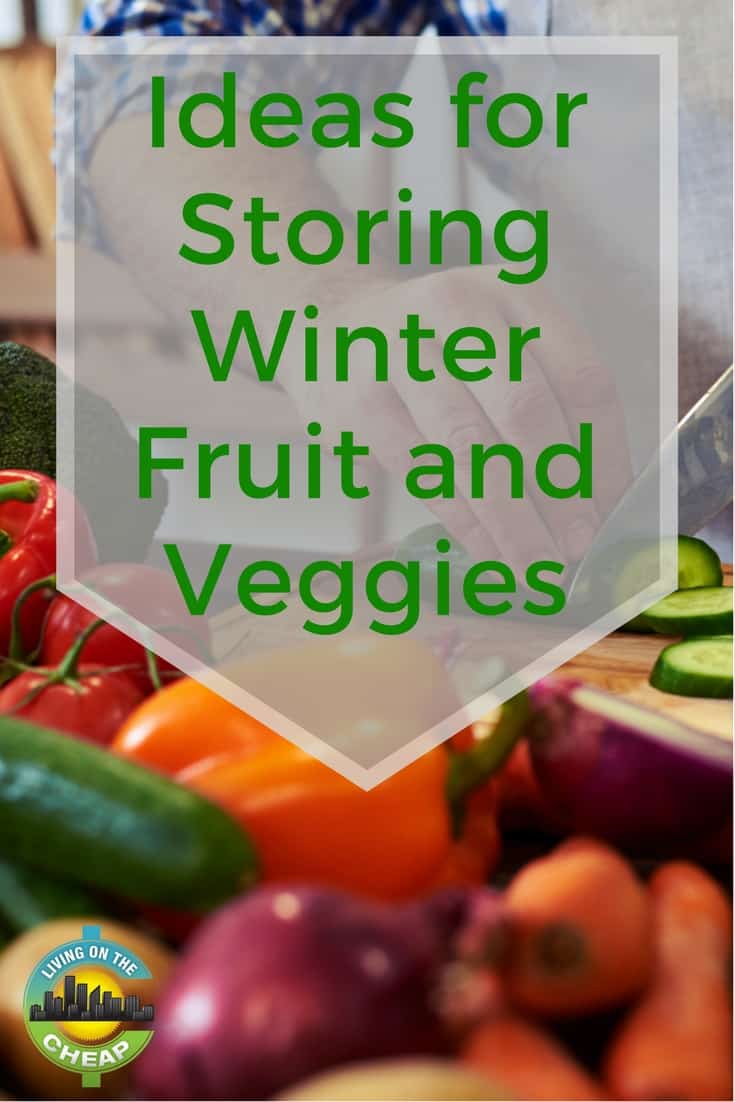This article is part of a Don’t Throw It Out! series on how to preserve fresh foods and avoid food waste.
Food waste by the average American family is estimated at 25 percent of your grocery shopping dollars, or $2,000 a year. Fresh vegetables top the list. If you have a better use for $2,000 this year, please read on for simple ways to store and preserve fresh vegetables before they become food waste in the trash or compost bin. Listed below are storage recommendations for popular seasonal vegetables. As a general rule, locally grown organic produce does not stay fresh as long as conventional produce.

Store all fresh vegetables without washing. Moisture on vegetables makes them decay more quickly. Just before you are ready to use them, wash vegetables in plenty of running water and then prepare as desired. Vegetables that show signs of spoilage begin to wilt or soften. Before they become food waste, preserve them using one of these best preserving methods for fresh vegetables.
Avocado
Store unripe (hard) avocados at room temperature (65-75° F) for four or five days, or until the broad end yields slightly when pressed gently. Store ripe avocados in the refrigerator up to five days.
Beets, turnips, and rutabagas
Store greens and roots separately. Cut off greens, leaving one to two inches of stem attached to the root. Wrap greens in a paper or cloth towel and place in the vegetable bin or plastic bag in the refrigerator. Place roots unwrapped in the vegetable bin or in a plastic bag in the refrigerator. Store greens for a few days and roots up to three weeks.
Carrots and parsnips
Carrot and parsnip greens are usually cut off and discarded; however, some people like to use the tops to make pesto, add them raw to salads or cook them in soup like you would parsley. If your skin is irritated when handling these greens, you may be sensitive to the tops and should avoid consuming them. Visit the World Carrot Museum for more information. Store roots in the vegetable bin or in plastic bags in the refrigerator up to two months. Large, mature roots, especially those mulched in the garden over winter, keep longer than young vegetables. Raw parsnips turn brown when peeled or cut, so soak for 15 minutes in one quart water with 1/4 cup lemon juice or 1½ teaspoons vinegar and 1½ teaspoons salt.
Citrus fruits
Store citrus (lemons, limes, oranges, grapefruits, pomelos and tangerines) for three to eight weeks in cool (40° F to 50° F) conditions in baskets or mesh bags to maximize airflow and prevent mold growth. Oranges can be stored closer to freezing (32° F to 34° F).
Lettuce and greens, including chard and kale
Discard any bruised or wilted leaves. Store greens in plastic bags in the refrigerator. Store leafy greens up to two days and heads up to one week. If salad greens begin to wilt, make this lettuce soup recipe, which you can enjoy today or freeze up to one month (freeze the soup without cream and add it after you reheat the frozen soup).
Mushrooms
Store mushrooms in a brown paper bag or wrapped in paper or cloth towels in the vegetable bin in the refrigerator up to one week. Layering mushrooms in paper or cloth towels will help extend their shelf life. Do not store in plastic or other airtight containers as this shortens their storage life to just two to three days.
Onions and garlic
Store dry onions, shallots and garlic in a basket or paper bag in a cool (50-60° F), dark place up to one month.
Potatoes
Store raw potatoes in a basket or paper bag in a cool, dark place (40-60° F) to delay sprouting and shriveling. Potatoes exposed to light turn green; before preparing trim any green areas, which taste bitter and can cause indigestion if eaten in large amounts. If potatoes sprout or shrivel, trim the sprouts and cook as soon as possible. Never refrigerate raw potato, which turns their starch to sugar and creates “off” flavors when cooked. Store potatoes away from other produce, especially apples, pears, bananas and onions, which cause potatoes to spoil more quickly. Raw potatoes turn brown when peeled and cut. To prevent browning, soak cut potatoes for 15 minutes in one quart water with 1/4 cup lemon juice or 1½ teaspoons vinegar and 1½ teaspoons salt.
Pumpkin and winter squash
Store winter squashes in a cool (50-60° F), dark place up to six months.
Sweet potatoes
Same as potatoes, store sweet potatoes in a basket or paper bag in a cool, dark place (40-60° F). If stored at room temperature, use within one week.
If you liked this post, you may also like:
Preserve food with cheap canning equipment and free recipes
How to keep spring veggies fresh to avoid food waste
How to keep summer veggies fresh to avoid food waste
How to keep fall fruits and vegetables longer
How to preserve and avoid wasting fresh fruit
For more information about food preservation methods and recipes, see The Home Preserving Bible by Carole Cancler.

